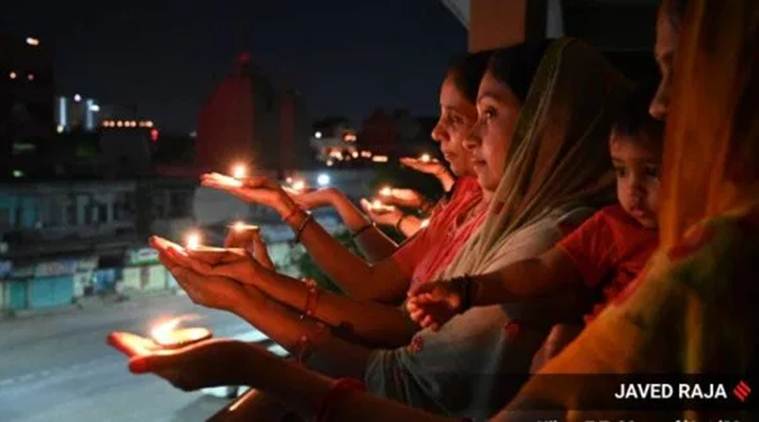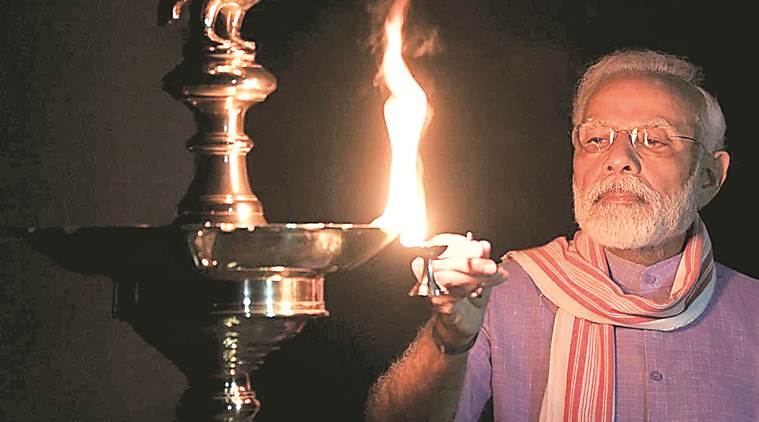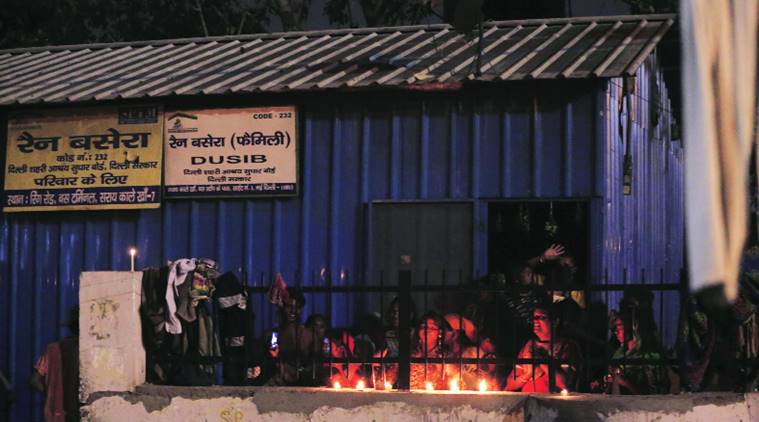 Millions of Indians across the country switched off lights at their homes and lit candles, diyas or turned on mobile phone torches on Sunday night, responding to Prime Minister Narendra Modi’s appeal to show the nation’s “collective resolve and solidarity” in its fight against coronavirus.(Express photo: Javed Raja)
Millions of Indians across the country switched off lights at their homes and lit candles, diyas or turned on mobile phone torches on Sunday night, responding to Prime Minister Narendra Modi’s appeal to show the nation’s “collective resolve and solidarity” in its fight against coronavirus.(Express photo: Javed Raja)
In the run-up to the 9-minute lights-off exercise, the frequency of the synchronised grid plummeted briefly below the mandated lower range of 49.9 hertz — falling to its lowest point of 49.73 hertz at 8.49 pm, and causing some anxious moments among those manning the country’s electricity grid.
This slide in frequency, in part, reflected the transition orchestrated by grid manager POSOCO in India’s power generation mix — hydro generation being reduced “and conserved” for providing flexibility for the 9 pm event, and major thermal stations also being ramped down progressively, in anticipation of the fall in load.
While there was never really a point during the entire episode that seriously threatened the the grid’s operations, a point of concern was that frequency drifted steadily upwards over the 9-minute period, and ended at 50.3 hertz at 9.09pm — marking a frequency jerk of around 0.57 hertz over a span of a little over 20 minutes.
An official involved in the exercise said the frequency was reduced to 49.73 Hz just before 9 pm in an effort to ensure that it did not overshoot when the lights were switched off at 9 pm.
 PM Modi lights a lamp during the 9-minute exercise. (ANI)
PM Modi lights a lamp during the 9-minute exercise. (ANI)
“During the 9 minute period the frequency was steadily ramped up to 50.3 Hz by 9.09 pm so that it doesn’t dip low when the lights are back. That seems to have worked,” the official said.
The gradual ramping up of hydro and gas-based generation post 9 pm ensured that the drop in the load and subsequent load increase over the next 9 minutes was handled by the grid operators without any significant problems. How much load reduction took place could not be ascertained and the National Load Despatch Centre data compiling the trend was awaited at the time of going to press.
 An official involved in the exercise said the frequency was reduced to 49.73 Hz just before 9 pm in an effort to ensure that it did not overshoot when the lights were switched off at 9 pm.
An official involved in the exercise said the frequency was reduced to 49.73 Hz just before 9 pm in an effort to ensure that it did not overshoot when the lights were switched off at 9 pm.